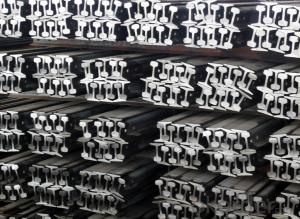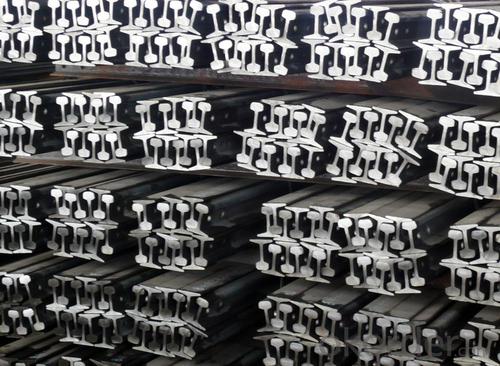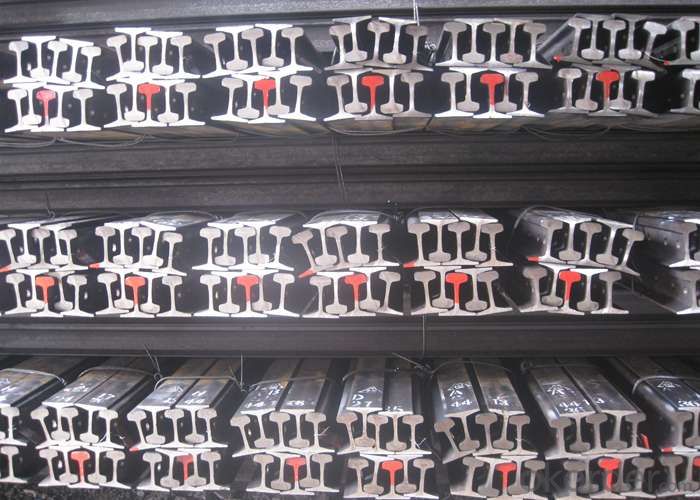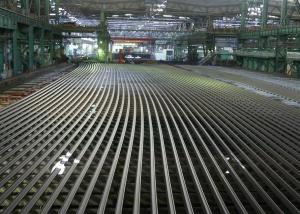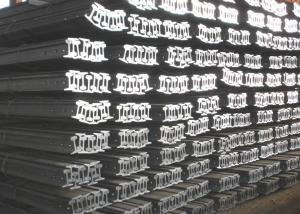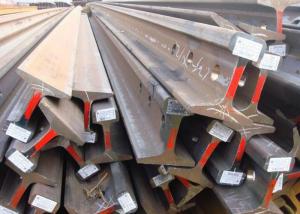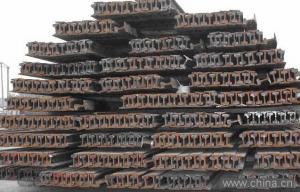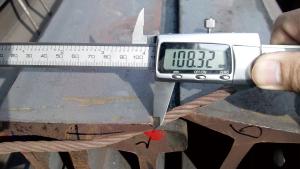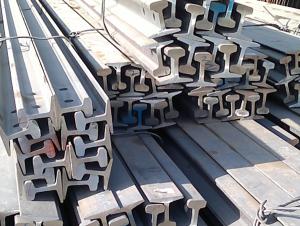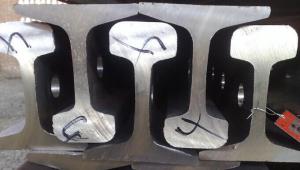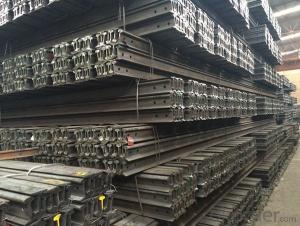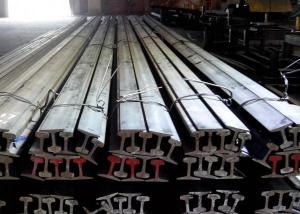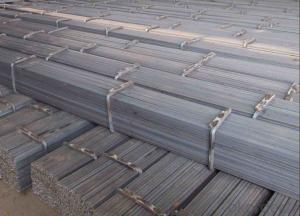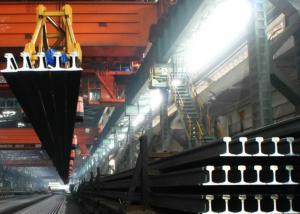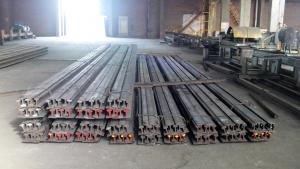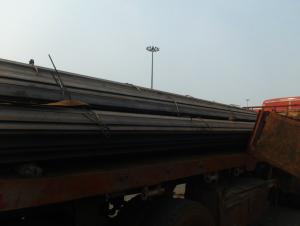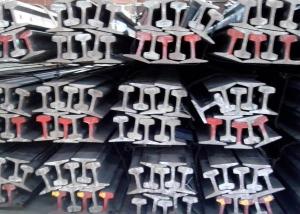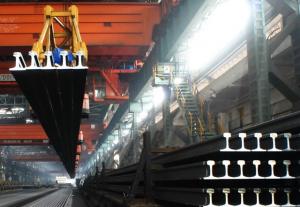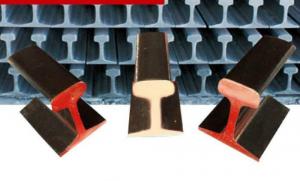Steel Light Rail Grade Q235
- Loading Port:
- China Main Port
- Payment Terms:
- TT or LC
- Min Order Qty:
- 50 m.t.
- Supply Capability:
- 5000 m.t./month
OKorder Service Pledge
OKorder Financial Service
You Might Also Like
Product Description:
OKorder is offering Steel Light Rail Grade Q235 at great prices with worldwide shipping. Our supplier is a world-class manufacturer of steel, with our products utilized the world over. OKorder annually supplies products to African, South American and Asian markets. We provide quotations within 24 hours of receiving an inquiry and guarantee competitive prices.
Product Applications:
Steel Light Rail Grade Q235 are ideal for structural applications and are widely used in forest region, Mines, factories and construction sites laid of the place such as temporary transport line and light motorcycles with line.etc.
Product Advantages:
OKorder's Steel Light Rail Grade Q235 are durable, strong, and wide variety of sizes.
Main Product Features:
· Premium quality
· Prompt delivery & seaworthy packing (30 days after receiving deposit)
· Mill test certification
· Professional Service
· Competitive pricing
Product Specifications:
Manufacture: Hot rolled
Grade: Q235, 55Q
Certificates: ISO, SGS, BV, CIQ
Length:6m, 12m,12.5m
Package: Packed in bundles and shipped by break bulk or containers.
LIGHT RAIL/HEAVY RAIL | Height (mm) | Bottom (mm) | Head width (mm) | Head height (mm) | Waist height | Bottom height (mm) | Waist thichness (mm) | Section cm2 | Mass: Kg/m |
9 | 63.50 | 63.50 | 32.10 | 17.48 | 35.72 | 10.30 | 5.90 | 11.30 | 8.94 |
12 | 69.85 | 69.85 | 38.10 | 19.85 | 37.70 | 12.30 | 7.54 | 15.54 | 12.2 |
15 | 79.37 | 79.37 | 42.86 | 22.22 | 43.65 | 13.50 | 8.33 | 19.33 | 15.2 |
22 | 93.66 | 93.66 | 50.80 | 26.99 | 50.00 | 16.67 | 10.72 | 28.39 | 22.3 |
30 | 107.95 | 107.95 | 60.33 | 30.95 | 57.55 | 19.45 | 12.30 | 38.32 | 30.1 |
FAQ:
Q1: How many tons of steel products could be loaded in containers?
A1: Usually the steel products are delivered by bulk vessel because of the large quantity and the freight. However, there are no bulk vessel enter some seaports so that we have to deliver the cargo by containers. The 6m steel product can be loaded in 20FT container, but the quantity is changed according to the size, usually from 18tons to 25tons.
Q2: How do we guarantee the quality of our products?
A2: We have established an advanced quality management system which conducts strict quality tests at every step, from raw materials to the final product. At the same time, we provide extensive follow-up service assurances as required.
Q3: How soon can we receive the product after purchase?
A3: Within three days of placing an order, we will arrange production. The normal sizes with the normal grade can be produced within one month. The specific shipping date is dependent upon international and government factors, the delivery to international main port about 45-60days.
Images:
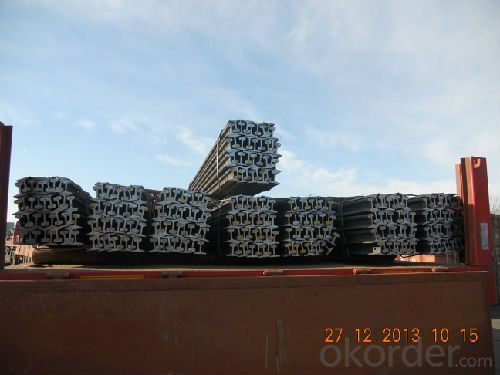
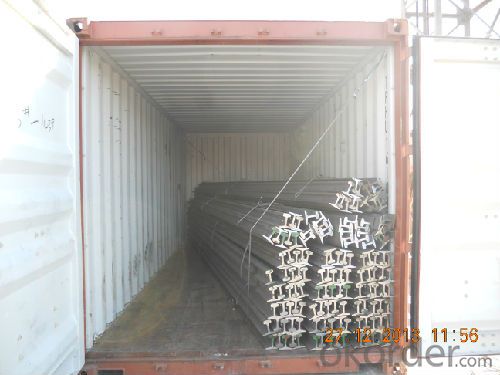
- Q: Are steel rails used in industrial applications?
- Yes, steel rails are commonly used in industrial applications, particularly for railways and transportation systems. They provide a durable and reliable track system for heavy machinery, trains, and other industrial vehicles.
- Q: What is the impact of curved tracks on steel rail performance?
- Curved tracks have a significant impact on steel rail performance. As trains navigate through curves, the lateral forces increase, causing higher wear and tear on the rails. This leads to faster deterioration and reduced lifespan of the steel rails. Additionally, curved tracks may result in increased wheel-rail contact forces, leading to higher levels of noise and vibration. Therefore, proper maintenance and monitoring of curved tracks are crucial to ensure optimal steel rail performance and overall safety of the railway system.
- Q: How do steel rails handle extreme temperatures in desert regions?
- Steel rails are designed to withstand extreme temperatures in desert regions. The steel used in rail construction has a high melting point, ensuring it remains stable under intense heat. Additionally, the rails are engineered to expand and contract with temperature fluctuations, preventing warping or cracking. Proper maintenance practices, such as regular inspections and lubrication, also help to ensure the durability and functionality of steel rails in desert climates.
- Q: Are steel rails vulnerable to corrosion?
- Yes, steel rails are vulnerable to corrosion. Corrosion is a natural process that occurs when steel is exposed to moisture and oxygen over time. This can be particularly problematic for steel rails as they are constantly exposed to the elements, including rain, snow, and humidity. Additionally, the presence of contaminants such as chloride ions, which are commonly found in coastal areas or from deicing salts, can accelerate the corrosion process. Corrosion weakens the steel rails, leading to potential structural issues and reduced lifespan. To mitigate corrosion, various measures are taken, such as applying protective coatings, utilizing corrosion-resistant alloys, and implementing regular maintenance and inspection programs.
- Q: Can steel rails be bent or shaped to fit different track designs?
- Yes, steel rails can be bent or shaped to fit different track designs.
- Q: How do steel rails handle temperature variations?
- Steel rails handle temperature variations by expanding and contracting. When the temperature increases, the rails expand, and when the temperature decreases, they contract. This expansion and contraction are accommodated by leaving small gaps between the rail segments. Additionally, steel rails are designed to have a certain degree of flexibility, allowing them to adjust to temperature changes without causing significant damage or distortion.
- Q: How are steel rails protected against soil erosion?
- Steel rails are protected against soil erosion by applying a layer of ballast, typically made of crushed stone or gravel, underneath and around the rails. This ballast helps to stabilize the rails, preventing them from shifting due to soil erosion caused by water or wind. Additionally, regular maintenance and inspections are conducted to repair any areas of erosion or damage to ensure the long-term stability and safety of the rail infrastructure.
- Q: What are the challenges of integrating steel rails in existing railway infrastructure?
- Integrating steel rails into existing railway infrastructure can present a variety of challenges. One of the primary challenges is ensuring compatibility between the new steel rails and the existing infrastructure. This involves matching the dimensions, weight, and structural properties of the new rails with the existing track system to ensure proper alignment and functionality. Another challenge is the potential need for modifications or upgrades to the existing railway infrastructure. Depending on the condition and age of the infrastructure, it may be necessary to make adjustments to accommodate the new steel rails. This could involve replacing sleepers, adjusting the ballast, or even reconfiguring the track layout in certain sections. Additionally, integrating steel rails may require careful planning and coordination to minimize disruptions to train services. This is especially crucial in busy or heavily trafficked rail networks, where any delays or closures can have significant impacts on passenger or freight transportation. Timing the integration process to minimize disruptions, such as conducting work during off-peak hours or weekends, can help mitigate these challenges. Furthermore, the cost of integrating steel rails into existing infrastructure can be a significant challenge. This includes the expenses associated with procuring the steel rails, conducting necessary modifications or upgrades, and ensuring compliance with safety regulations. Budget constraints may make it difficult to implement these changes, and securing funding for such projects can be a complex process. Lastly, the introduction of steel rails may require additional maintenance and inspection procedures to ensure their long-term performance. Steel rails have different characteristics compared to other materials, such as concrete or wood, and may require specialized maintenance practices or equipment. Training staff and ensuring proper maintenance protocols are in place can be a challenge, but is essential to ensure the continued safety and reliability of the rail network. In conclusion, integrating steel rails into existing railway infrastructure poses challenges related to compatibility, modifications, disruptions, cost, and maintenance. However, with careful planning, coordination, and investment, these challenges can be overcome, leading to improved rail performance and efficiency.
- Q: Can steel rails be used in curved elevated railway structures?
- Yes, steel rails can be used in curved elevated railway structures. Steel rails are highly flexible and can be curved to accommodate the desired curvature of the railway track. This allows for the construction of curved elevated railway structures without compromising the integrity and stability of the railways.
- Q: How are steel rails protected from damage caused by chemical spills?
- Steel rails are typically protected from damage caused by chemical spills through the application of protective coatings. These coatings act as a barrier, preventing the chemicals from directly contacting and corroding the steel surface. Regular inspections and maintenance are also conducted to promptly address any spills or damages to ensure the long-term durability of the rails.
Send your message to us
Steel Light Rail Grade Q235
- Loading Port:
- China Main Port
- Payment Terms:
- TT or LC
- Min Order Qty:
- 50 m.t.
- Supply Capability:
- 5000 m.t./month
OKorder Service Pledge
OKorder Financial Service
Similar products
Hot products
Hot Searches
Related keywords
